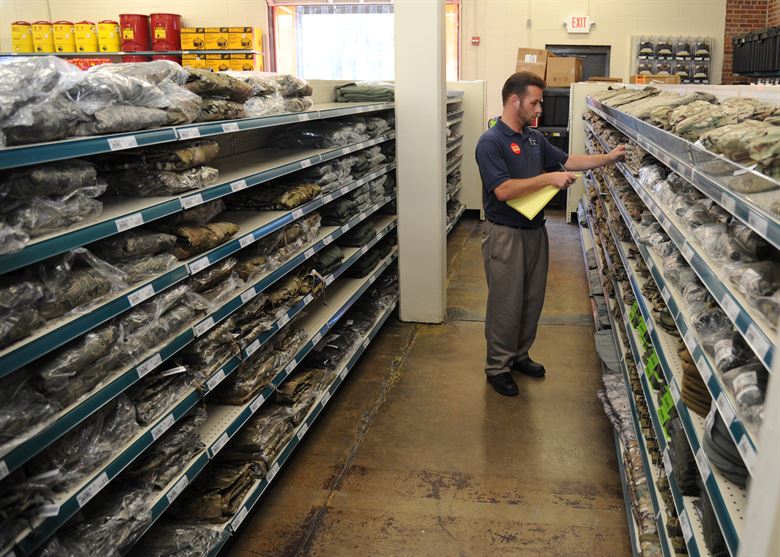Inventory Shrinkage & How To Account For It
Post on Wednesday, January 10th, 2018 in Accounting

Inventory shrinkage is one of the most common problems in accounting, which can severely impact both the profits and reputation of the business.
What is inventory shrinkage?
Inventory shrinkage is the loss of inventory items from a warehouse or store. You can detect the inventory shrinkage when the on-hand inventory records of a retailer report do not match the physical count. Inventory shrink can occur due to the following reasons:
- theft
- shoplifting
- misplaced stock
- inefficient recordkeeping
- shipping errors
- vendor fraud
- obsolete items
- damaged items
- incorrectly filled orders
In this article, we are going to show how you can prevent or at least minimize such unexpected product shrinkage. The following methods can help to do so:
Video Surveillance and Mirror Installation
Install security cameras and mirrors around your shop or storage area to detect any theft attempts. You can also install the cameras in the employee and customer areas of your shop, including the stock and break rooms.
Security Services
To prevent inventory shrinkage, hire a security or guarding service to protect your premises.
Instructing Your Employees
To prevent petty theft, instruct your employees to greet each visitor to your business, so that they know that they’ve been noticed. Besides, employees should pay attention to visitors who avoid eye contact, appear nervous, seem to wander aimlessly, etc.
Smart Item Placement
Place the most valuable items in locked cases and store them under lock and key at the back of the store. Proper item placement both in the store and in the warehouse can prevent items from being damaged, which is also a reason for inventory shrinkage. For example, train your employees to never place fragile items on top shelves.
Inventory Management Processes Automation
Install reliable inventory management software so that you can track your items at a bin level.
Annual Physical Inventory Counts
To protect your company from inventory shrink, count your physical inventory every year or even twice a year to compare your actual numbers of specific items to the recorders. You can either entrust this work to your employees or use the services of an external inventory auditor. Again, another option is to use inventory management software.
Cycle Counts
Cycle counting means counting a small subset of inventory, typically the most valuable items, in a specific location on a specified day. The purpose of cycle counting is to verify the inventory accuracy and compare your accounting records with physical counts.
Item Labeling
Label each item with a smart RFID label, which contains a chip with product information and gives the retailers an opportunity to track items by using their inventory control system in real time. As a result, you can easily track down the items that have been taken out of your shop or warehouse, and thus prevent inventory shrinkage.
Dedicated Employees
Assign only specific employees to accept, open, and distribute new shipments. Instruct them to compare the items with your order sheet, not the shipper’s packing list, and immediately log them into an inventory system or mark them as received before they are put away.
Removal of Obsolete Items
Because of ever-changing market demands, some of your products may become obsolete. This also contributes to product shrinkage. Therefore, it is important to review the inventory and get rid of such obsolete items.
Inspection of the Receiving Area and Received Damaged Goods
Many thefts happen in the receiving area of the warehouse, where employees can mark some items as damaged when they are actually not. Therefore, it would be smart to pay special attention to the receiving area. Another good idea is to inspect all damaged items before they are scrapped, in order to find out whether some of them were not “accidentally scrapped” into an employee’s pocket.
Daily Transaction Review
Review each day’s transactions in front of your employees for accuracy as well as suspicious or repetitive transactions. Give your employees their own passwords or pin numbers to sign in to the POS terminal. It can help you find out which employees should be suspected of theft and which employees may be just making transaction errors.
Inventory Shrinkage Percentage Calculation
First, you need to calculate shrinkage. To do this you determine the difference between the amount of booked inventory and the amount of physical inventory in your warehouse or store, like this.
Booked Inventory – Physical Inventory = Shrinkage
So if you have $10,000 in booked inventory and $8,500 in physical inventory, subtract $8,500 from $10,000 to determine that the amount of shrinkage is $1,500. If you want to find the inventory shrinkage percentage, divide shrinkage by booked inventory for a period of time.
For example in this scenario, you would divide $1,500 by $10,000 to determine an inventory shrinkage percentage of about 15 %.
Compare these percentages over time to see if the inventory shrink is decreasing or increasing. Some inventory management software solutions can help you calculate the shrinkage percentage automatically, with just a couple of clicks. You can also set low stock alerts with notifications so you know when you’re running low on something.
We hope that our tips will help you to reduce inventory shrinkage and thus run a business successfully.

Adam is the Assistant Director of Operations at Dynamic Inventory. He has experience working with retailers in various industries including sporting goods, automotive parts, outdoor equipment, and more. His background is in e-commerce internet marketing and he has helped design the requirements for many features in Dynamic Inventory based on his expertise managing and marketing products online.
Learn how Dynamic Inventory can streamline your business today!
Schedule a DemoRelated Articles
see all
An Overview of Dell’s Supply Chain Strategy
Dell entered the market in 1985, and evolved from a small, dorm-room based company in Texas to one of the …

How to Improve Your Warehouse Management System
A warehouse is not only a place to store your inventory. It also hosts all of the important logistics and …

How To Write Product Descriptions That Actually Convert To Sales
A product description should not just be a bland list of a product’s features. After the price of an item, a …

